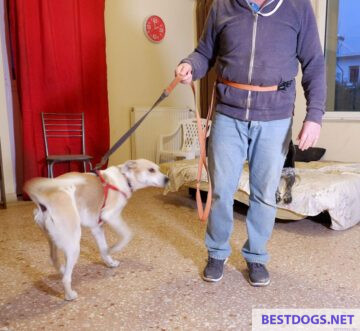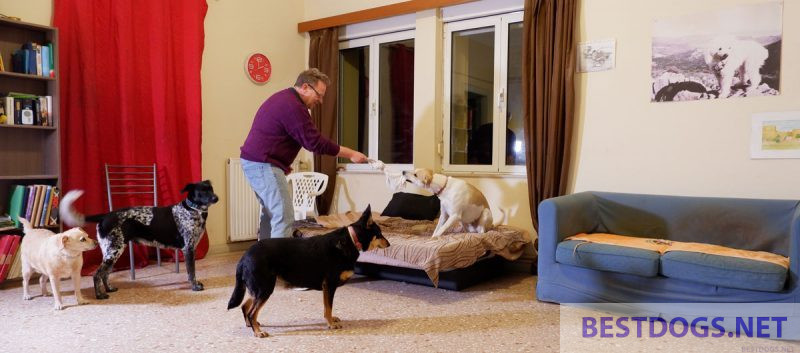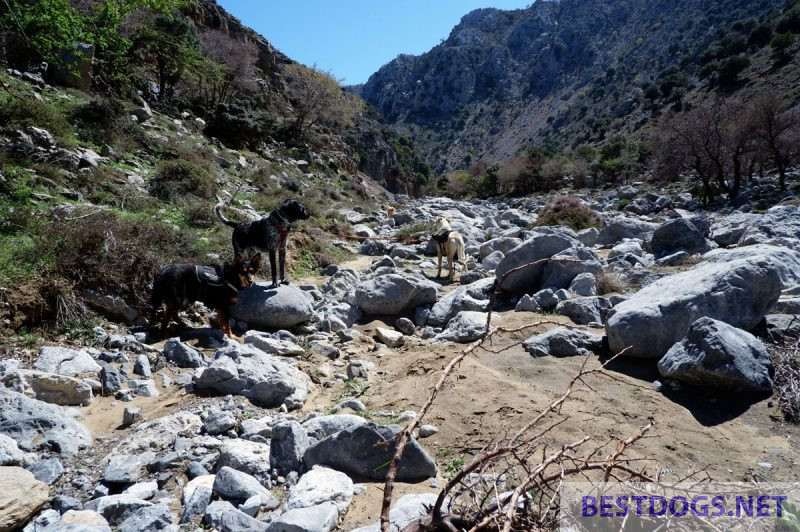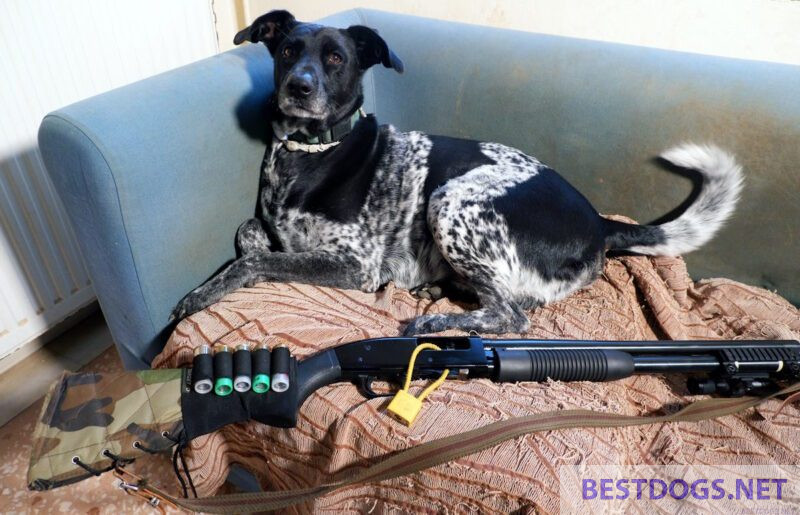Together with the dog on the bike.
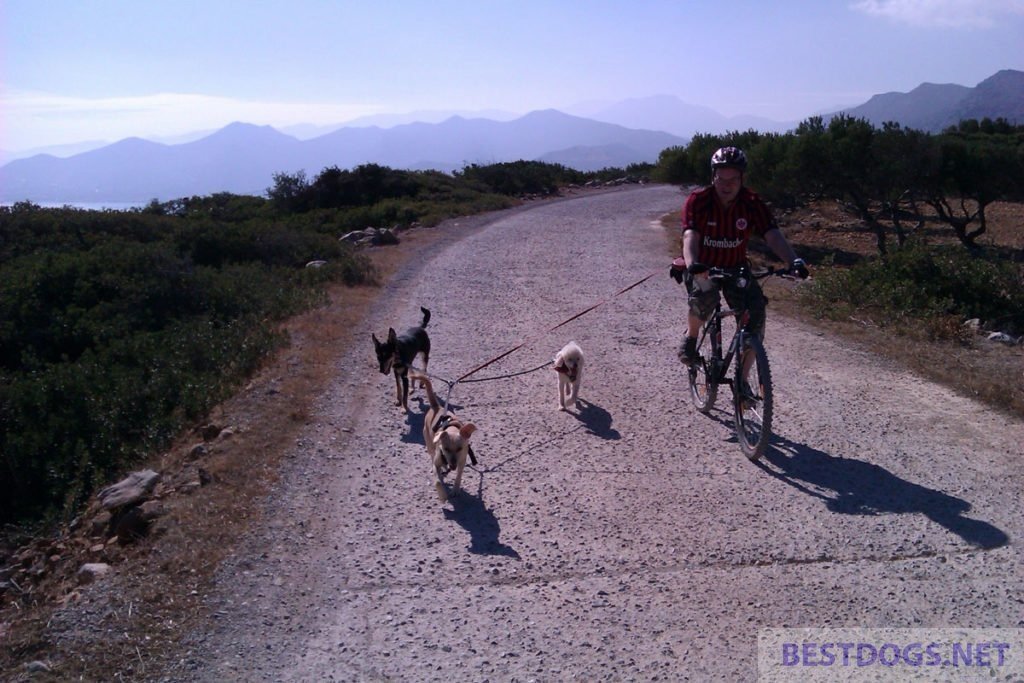
To develop the dog’s endurance, discipline and leadership, cycling is a great way.
Cycling with the dog
Table of Contents
With a slightly larger dog, cycling is a welcome change for the sporty master-dog pack. For this, however, you should take it leisurely.
There are various ways to guide the dog safely on the bike. For all applies, however, the dog must have sufficient discipline and obedience. Because if the dog pulls over its connection to the bicycle or master once in another direction strongly, because it smells at the roadside so great or a cat scurries over the street, it is fast over with the balance and the whole can end with unpleasant scrapes or injuries on the pavement. In this case, a smaller and lighter dog is enough, which can pull his master off the bike with enough leash length, or run directly in front of the wheel or in the spokes.
To avoid accidents and falls, it is important to get the dog used to the bike and its movements and also to demand disciplined walking from the beginning. On remote paths without much traffic, the dog can also run along without a leash.
It should also be pointed out that in Germany for example, according to the Highway Code, a dog must always run along to the right of the bicycle (in Britain probably exactly opposite). Therefore, a command word should be trained that indicates to the dog to run now on the right side. With most dogs, such an education usually works without problems, because the tours with the bike are often a lot of fun for them.
Helpful equipment
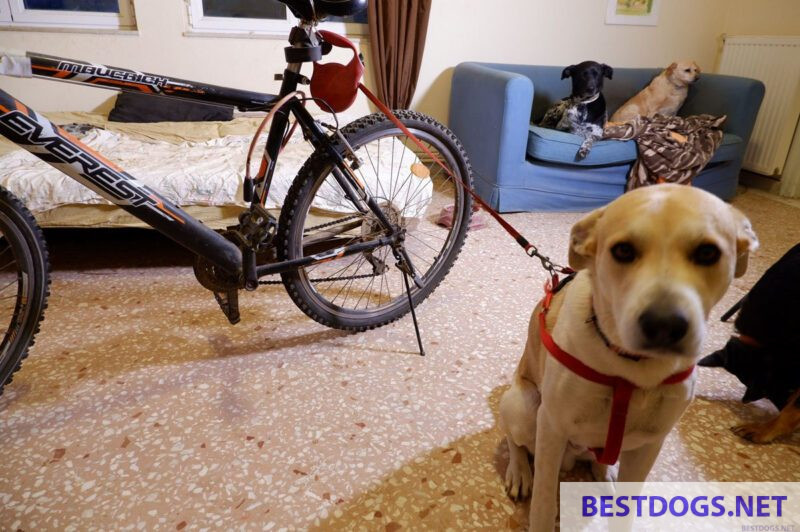
Proven for guiding dogs is the retractable leash, which can also be set to just a short length if needed when there is a lot of traffic, and can be released to flexible retractable lengths on dirt roads. A ‘jumper’ or flexible rubber as an intermediate piece on the bike or dog also takes the energy out if there is a jerk because the dog slows down, stops or runs in a different direction.
The ‘jumper’ is quite inexpensive and can be quite easily screwed to any bike, whereby a spring between the bike and the dog significantly reduces an occurring jerk.
In a pinch, a normal, sufficiently long leash from the walk will do, but it should only be lightly attached to the bike or carried in the hand so that it can be released in a violent jerk without falling. Of course, it is important that the traffic is not endangered by the then freely running dog, i.e. this solution is suitable only on quiet dirt roads.
In any case, it should be noted that the dog should wear a harness to which the leash is attached to the driver or bicycle, so that there is no injury to the four-legged companion by a jerk.
With bicycle tours one should have also always water and on longer tours also fodder for the dog with it.
Also, it can always happen that the dog hurts his paws or claws on the road. A dog first-aid kit for the road and a paw protector should therefore be carried.
A towel is also helpful if it rains on the way once right or the dog jumps for joy somewhere in the water, because they can also catch a cold afterwards.
Training the dog
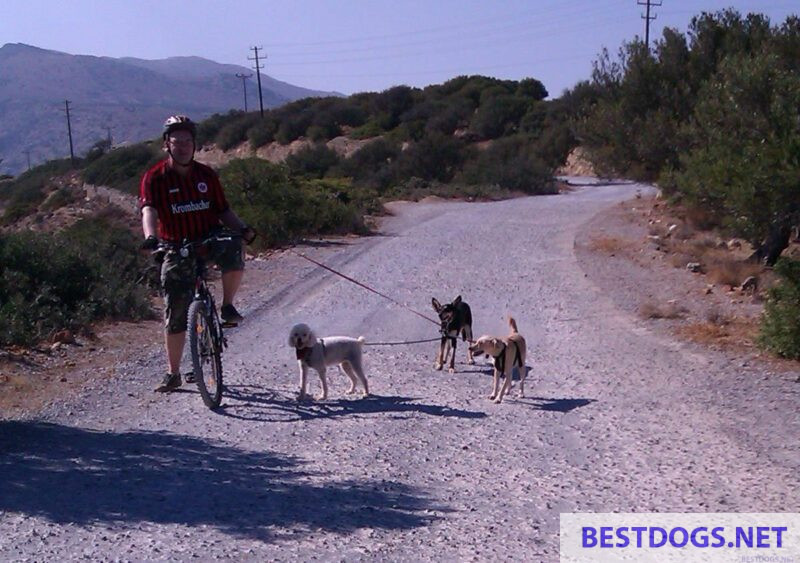
The first thing to do is to familiarize the dog with a bicycle by showing it to him and pushing it a bit. Do this until the dog is familiar with the bike. Then you can sit on it and even move a little bit with it.
If the dog becomes anxious or nervous and excited, you should stop the experiment and try again a little later.
During the first short test ride with the dog, it is possible that the dog barks, jumps at the owner on the bike, rushes or even tries to bite the legs of the pants. In this case, too, the test should be stopped first and the bike should be pushed a bit with the dog on the leash. After a while, the next attempt can be made until everything is completely normal for the dog and has become routine. It makes sense, because dogs can only concentrate for a limited time, to make only short attempts and this several times a day until it works.
The distances for the dog must be increased step by step when cycling, because unaccustomed overuse can very easily lead to muscle soreness or even strains. It is best to start with only a distance of 1 1/2 or 2 miles and increase this gradually.
The dog should trot loosely alongside, i.e. it should go forward not faster than with a speed of approximately 9 mph. In no case should the dog be driven to gallop and unlimited running alongside the bike is also not possible for him.
It is also important to give the dog his business and sniffing breaks in between and therefore stop occasionally.
Practical tips
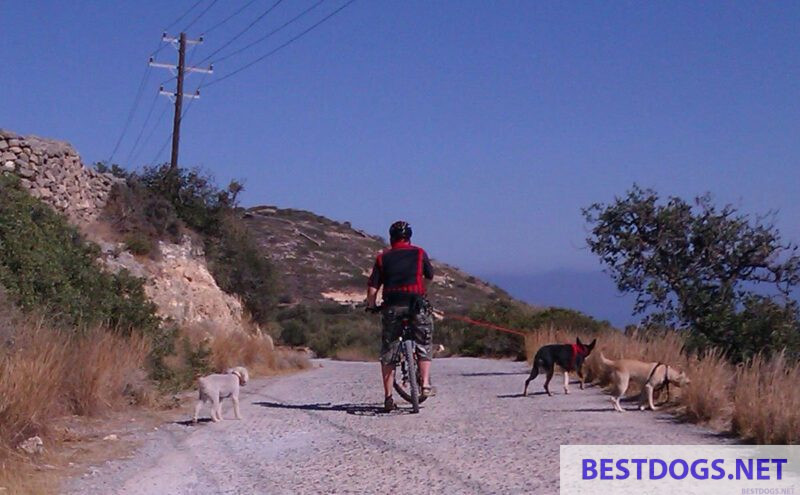
Driving only on paved roads with the dog is not good for his paws and claws, from therefore routes on dirt roads or better even grass or earth paths should be chosen.
If a traffic road is used, you should watch out for discarded trash or broken glass, as this can cause injuries to the dog’s paws.
Even if cycling is a lot of fun, you should not walk your dog in this way every day. For the four-legged friend, this then quickly becomes only a compulsory exercise, and you breed a ‘bike junkie’ who can no longer do without daily high-performance sports and activities.
Who is on the way with his dog only with the bicycle, in order to get it in as short a time as possible tired, is also wrong, because the quadruped needs also alternation and concentration exercises, which happens e.g. by track search and/or sniffing during the normal walk.
A healthy dog with sufficient exercise can cover up to twelve miles a day, but smaller breaks must be taken. If the bicycle tour should become longer, a special bicycle trailer must be carried along also for larger dogs, in order to transport the quadruped again and again temporarily with it.
It should also be remembered that in summer asphalt and also paths can become very hot due to intense sunlight, which is not suitable for the dog.
Riding a bike with small dogs
For smaller dogs, even leisurely cycling is usually still too fast, so ‘midgets’ should be taken along in a bicycle basket.
As for dogs that run alongside the bike, discipline is the magic word, because if the passenger in the bike basket wants to get out quickly during the ride to say ‘hello’ to a friendly dog lady or to give a cheeky cat a piece of his mind, things can become problematic or even dangerous. Even an excited barking or yapping from the basket from behind is already disturbing while riding a bike.
Of course, the ‘passenger’ must also be secured with a harness in his basket against jumping out or falling out. The same applies to the attachment of the basket to the bike itself.
So that also the four-legged passenger of the bicycle trip has something from it, it is necessary of course on the way breaks to insert, so that also the dog has some movement and can sniff extensively.
Of course, there are also suitable dog baskets or entire trailers for purchase for the bike.
Pulling dog in front of the bike
To be pulled on a bicycle, you don’t need a typical sled or pulling dog like a husky, for example, but it should be a strong and somewhat larger dog. Nevertheless, especially Nordic breeds of dogs are particularly suitable for this type of recreational use.
For this type of locomotion, the requirements described earlier for ordinary cycling with the dog apply.
In addition, one needs a padded pulling harness with long leashes, as there are for sled dogs to buy. The cyclist needs in addition a chest or belly belt from the mountaineer need, to which the long leash to the dog is fastened.
There are also new tasks for the dog and the owner. These include pulling a load for the dog or being pulled as a load for the driver, as well as leading on a long leash.
This should first be practiced on roads with little traffic and for this the dog must be put on the pulling harness and a collar. The first exercise is not to use the bicycle, but to let the dog pull an old car tire or wooden block instead.
With the lead line on the collar, you now walk behind the dog and train the new command words for ‘Right’, ‘Left’, ‘Stop’, ‘Slow down’ and ‘Faster’.
If the dog has problems at the beginning to pull the loads or is frightened because of the noises, which they make when dragging over the ground, it must be well persuaded. Also, this should only be practiced over short distances in the beginning.
To be pulled by the dog on the bike with a harness, pull and lead line requires good practice and a lot of discipline with a well-behaved dog and is not so easy.
Motorized with the quad bike
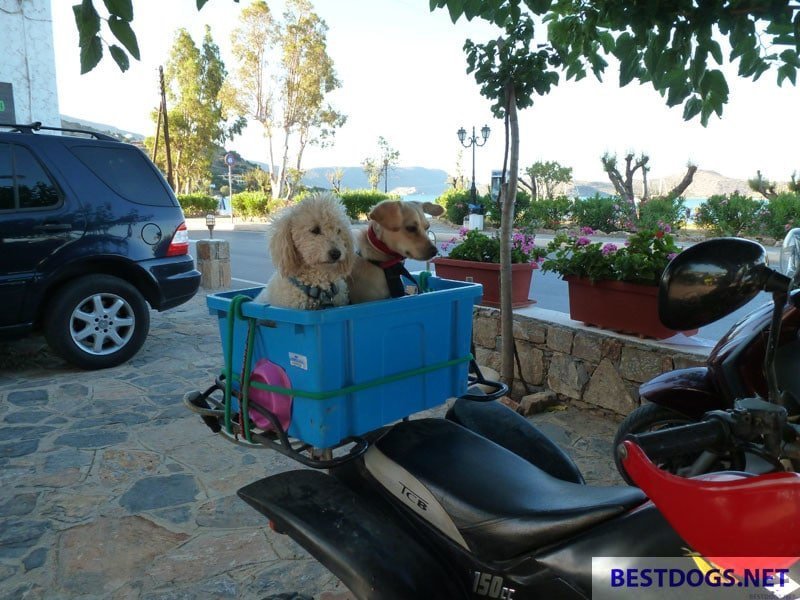
As with the bicycle, it is also possible to take dogs. Of course, they must not be tethered to the quad bike to run behind, because the speed of the vehicle is much too fast. This is both prohibited in road traffic and also cruelty to animals.
Therefore, just as small dogs are carried by bicycle, they are secured in a crate or container on the front or rear cargo areas of the quad bike. The transport container must of course also be securely fastened. For this purpose, stretchable tension straps or luggage tensioners have proven themselves for both tasks, whereby the straps are pulled through the dog’s running harness and fastened to the container.
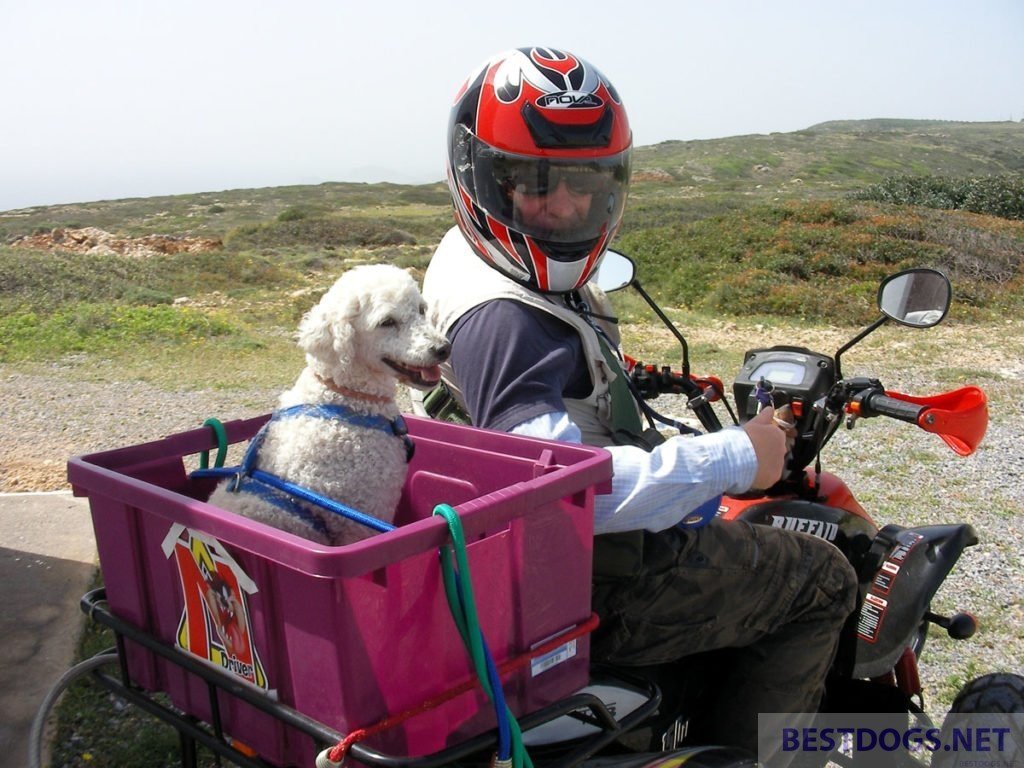
If one has reached the traffic-poor goal with the Quad Bike, it is appropriate just as with the bicycle to let the dog out of its crate, so that it can run freely in the area and sniff.
It is also possible to let the free running dog for a while behind a not too fast driven quad bike on remote dirt roads to run behind. This works excellently and lets the dog once really take off, whereby one must naturally make sure that he is always in sufficient distance from the driving vehicle. Due to the noise and exhaust fumes of the quad bike, experience shows that this is not a problem, because the dog already keeps a distance by itself.


